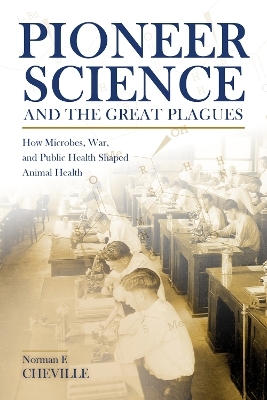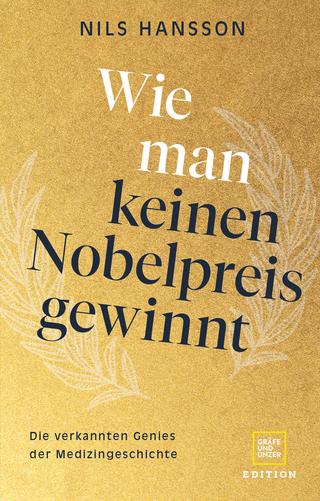
Pioneer Science and the Great Plagues
Purdue University Press (Verlag)
978-1-61249-642-9 (ISBN)
Pioneer Science and the Great Plagues covers the century when infectious plagues - anthrax, tuberculosis, tetanus, plague, smallpox, and polio - were conquered, and details the important role that veterinary scientists played. The narrative is driven by astonishing events that centered on animal disease: the influenza pandemic of 1872, discovery of the causes of anthrax and tuberculosis in the 1880s, conquest of Texas cattle fever and then yellow fever, German anthrax attacks on the United States during World War I, the tuberculin war of 1931, Japanese biological warfare in the 1940s, and today's bioterror dangers. Veterinary science in the rural Midwest arose from agriculture, but in urban Philadelphia it came from medicine; similar differences occurred in Canada between Toronto and Montreal. As land-grant colleges were established after the American Civil War, individual states followed divergent pathways in supporting veterinary science. Some employed a trade school curriculum that taught agriculturalists to empirically treat animal diseases and others emphasized a curriculum tied to science. This pattern continued for a century, but today some institutions have moved back to the trade school philosophy. Avoiding lessons of the 1910 Flexner Report on medical education reform, university-associated veterinary schools are being approved that do not have control of their own veterinary hospitals, diagnostic laboratories, and research institutes - components that are critical for training students in science. Underlying this change were twin idiosyncrasies of culture - disbelief in science and distrust of government - that spawned scientology, creationism, anti-vaccination movements, and other anti-science scams.
As new infectious plagues continue to arise, Pioneer Science and the Great Plagues details the strategies we learned defeating plagues from 1860 to 1960 - and the essential role veterinary science played. To defeat the plagues of today it is essential we avoid the digital cocoon of disbelief in science and cultural stasis now threatening progress.
Norman F. Cheville is distinguished professor and dean emeritus of the College of Veterinary Medicine at Iowa State University. Cheville began his work at the Army Biological Laboratory in Fort Detrick, Maryland, in the Veterinary Corps of the US Army from 1959 to 1961. After three years as research associate at the University of Wisconsin, he moved to the National Animal Disease Center as chief of Pathology from 1964 to 1989, and later as chief of the Brucellosis Research Unit, where he led the team that developed a new vaccine for bovine brucellosis. Working under Tony Allison at the National Institute for Medical Research in London in 1968, he investigated cellular immunity in poxvirus diseases. He was appointed chair of the Department of Veterinary Pathology at Iowa State University in 1995, and in 2000 was appointed dean of the College of Veterinary Medicine in 2000, from which he retired in 2004.
Preface
Acknowledgments
Part I. Prologue
1. The Veterinary Schools of Europe
2. Edward Jenner: Zoologist, Physician, Pioneer
3. William Dick: From Farrier to Veterinarian in Edinburgh
4. The Science Giants of 1860: Pasteur, Virchow, and Darwin
5. Robert Koch: Game Change
Part II. Farrier to Veterinarian
6. Emigrants West: Ohio Country, Iowa Territory, and Tejas
7. The Canadian Midwest: Divergence of Lower and Upper Canada
8. Pioneers in the Midwest Frontier: Physicians in Veterinary Practice
9. New Plagues, Civil War, and the United States Department of Agriculture
10. Agriculture and Veterinary Science in the Midwest
Part III. Pioneering Veterinary Education
11. Urban East Versus Rural West: Montreal and New York Diss Toronto and Iowa
12. The Pioneer State Colleges: Iowa, Ohio, Pennsylvania, and Cornell
13. Plagues and the Bureau of Animal Industry
14. Bacteriology in the Heartland
15. The 1890s: Horse Markets and Enrollments Drop
Part iv. Livestock and Veterinarians Go West
16. Private Veterinary Schools: Chicago, Kansas City, and Indianapolis
17. Public Veterinary Schools: The Second-Generation Pioneers
18. The Bureau of Animal Industry and Hog Cholera
19. Veterinary Education, Charles Stange, and the Flexner Report
20. World War I: Biowarfare, Prejudice, and the U.S. ArmyVeterinary Corps
Part v. Ascendance
21. Agricultural Depression Amidst a National Boom: The 1920s
22. 1929: Prelude to Bad Times
23. Public Health and Distrust of Government: The Tuberculin War
24. A Depression Paradox: Culture and Science
25. New Deal: Discoveries in Infectious Disease
Part vi. Duty Required
26. War: The Home Front
27. Veterinary Corps and Bioterror
28. Postwar Investigations of Enemy Biological Warfare
29. Prelude to the Science Revolution
30. The Atomic Age
Part vii. Transformation
31. New Programs, New Laboratories: Malaria, Polio, and New Viruses
32. Comparative Medicine: Models for Leukemia
33. Grassroots Mandates: The National Research Centers for Livestock Diseases
34. Old Plagues in the Wild: The National Wildlife Centers
35. New Plagues: Scrapie, Mad Cow Disease, and the Prion
Part VIII. Epilogue
36. The Farm Crises of 1980–1995: Distrust of Science
37. The Gender Shift
38. Biopolitics
39. Bioterror, Anthrax, and the National Animal Health Networks
40. Anti-Science Scams and Keys to Progress
Appendixes
Notes
Index
| Erscheinungsdatum | 23.03.2021 |
|---|---|
| Reihe/Serie | New Directions in the Human-Animal Bond |
| Zusatzinfo | 40 illustrations |
| Verlagsort | West Lafayette |
| Sprache | englisch |
| Maße | 152 x 229 mm |
| Gewicht | 292 g |
| Themenwelt | Geisteswissenschaften ► Geschichte ► Allgemeine Geschichte |
| Geisteswissenschaften ► Geschichte ► Regional- / Ländergeschichte | |
| Studium ► Querschnittsbereiche ► Geschichte / Ethik der Medizin | |
| Studium ► Querschnittsbereiche ► Prävention / Gesundheitsförderung | |
| Naturwissenschaften | |
| Veterinärmedizin | |
| ISBN-10 | 1-61249-642-3 / 1612496423 |
| ISBN-13 | 978-1-61249-642-9 / 9781612496429 |
| Zustand | Neuware |
| Haben Sie eine Frage zum Produkt? |
aus dem Bereich


